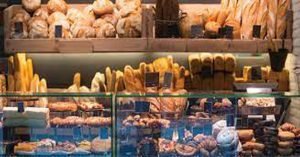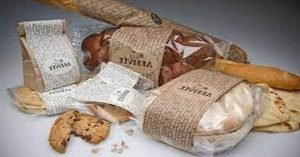Keep the product integrity – packaging materials and techniques

Keep the product integrity – packaging materials and techniques
The ideal bread packaging material must:
be attractive, maintain adequate shelf-life, run on automatic machinery, be strong, be inexpensive, be an adequate moisture barrier, and protect the shape of the product. Basic requirements of a package intended to contain bakery products include:
– water vapor permeability of packages
– oxygen exchange from within and outside a package
– aroma impermeability characteristics of packaging materials
– resistance to seepage of fats and oils
– protection against deteriorative visible and ultraviolet radiation
– good printability and appearance
– physical, and mechanical protection to the products against shocks, crushing, and vibrations
– compatibility and safety of the packages Some examples of food contact materials used in the bakery: Polypropylene (PP), Low-density polyethylene (LDPE), Biaxially Oriented Polypropylene (BOPP), Paper / Foil.
One alternative method used to extend the mold-free shelf life of bakery products is MAP-modified atmosphere packaging which are using nitrogen (N2) and carbon dioxide (CO2), in an optimal ratio: CO2: N2 = 60: 40 (fig. 24).
N2 is an inert, tasteless gas that displays little or no antimicrobial activity on its own, and CO2 is the most important gas in the gas mixture, it is both bacteriostatic and fungistatic.
MAP introduction in the market caused an important impact on the packaging of processed and fresh food industries; this technology has largely improved the shelf life by controlling the permeability of air and moisture.

The high barrier properties of flexible plastic packages also have reduced the influx of microorganisms into the food packages, thus enhancing the shelf life of the food products.
Bakery companies in Europe commonly use gas packaging for the shelf-life extension of bread and cakes. In addition to extending the mold-free shelf life of products, CO2-enriched atmospheres have also been reported to prevent staling in many bakery products.
The main benefits associated with food products MAP are better quality retention, extended product shelf life and the associated increase in the market area, improved product presentation and consumer appeal, and a reduction in energy costs associated with freezing and freezer storage costs.

Some of the disadvantages of the MAP technique include:
• The initially higher cost of packaging equipment
• Higher cost of package materials
• Secondary fermentation problems caused by CO2- resistant microorganisms
• Package collapse in products using a high CO2 concentration (100%)
• The potential for generating conditions favorable for anaerobic pathogenic microbiological growth. Active packaging employs a packaging material that interacts with the internal gas environment to extend the shelf life of food.
Such new technologies continuously modify the gas environment (and may interact with the surface of
the food) by removing gases from/or adding gases to the headspace inside a package.
It involves packages incorporating antimicrobials and oxygen scavengers. Active substances are released from the packaging material to the surface of the product during the whole shelf-life of the packaged foodstuff.
The protective additives are added to the packaging material and remain in the material even after the food is removed, thus facilitating a more natural diet with fewer chemicals in it.
Active packaging using natural plant antimicrobial agents – essential oils (EOs) and plant extracts – can control microbial contamination by reducing the growth rate and maximum growth population or by inactivating microorganisms by contact.
More, this is an important step in developing a new “green” image for selected bakery products, besides reducing and/or eliminating chemical preservatives used to prolong the shelf life of food products.

Ethanol – used as an antimicrobial agent in the form of a sachet or incorporated into the packaged material; could be also sprayed after baking on the surface of the product – this option has a negative public perception, and raises the chances to develop a residual flavor and implies regulatory issues.
